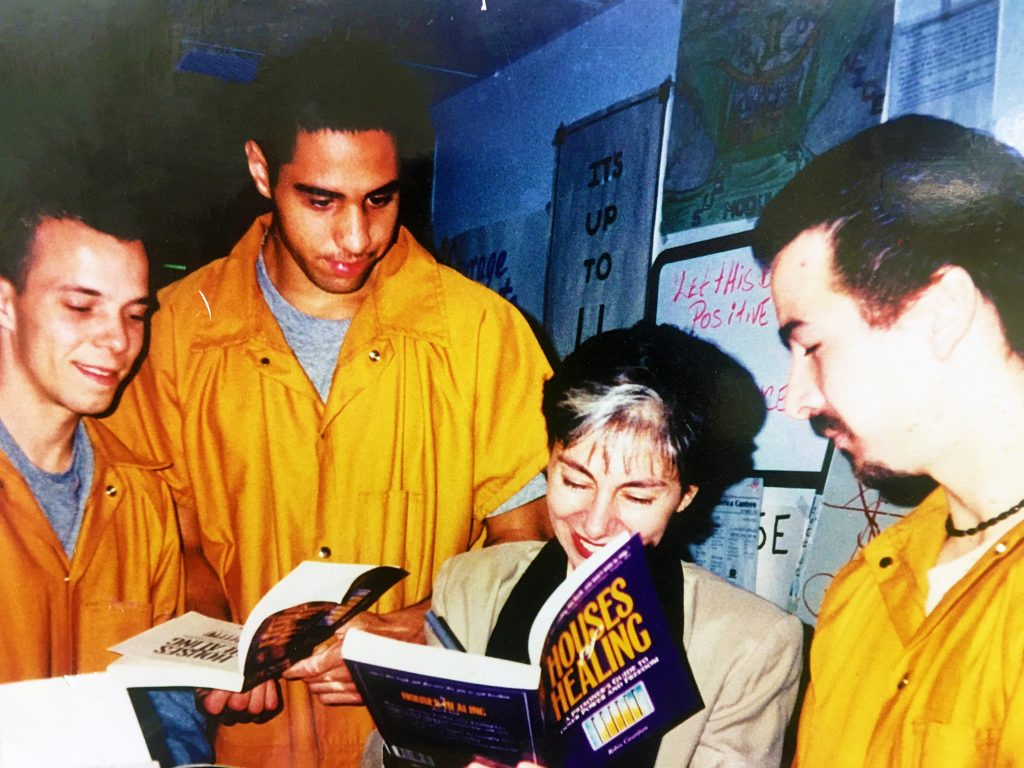Exclusive Q&A with Lionheart’s Executive Director and Author of Houses of Healing, Robin Casarjian
The following is an exclusive Q&A with Robin Casarjian, Lionheart’s Executive Director and author of Houses of Healing. Keep reading to find out more about her work with incarcerated individuals and Lionheart’s newly-released self-study program, Making Time Count.

Q: What led you to get involved in the development of programs for incarcerated individuals, and then to eventually develop the Houses of Healing Program?
A: I was giving a public talk on forgiveness, the topic of my first book, and a woman came up to me after the talk and said, “I teach a course on addiction recovery at a medium security prison for men in Massachusetts. What you are saying would be so relevant for the men to hear. Would you be willing to come to the prison and share these same insights?” I had never been in a prison – I had never thought about going into a prison – but I welcomed the opportunity. Eight men attended the group. She asked if I would do one more presentation but since it wasn’t part of an ongoing group she warned me that it was possible that only a few men would show up. I drove over an hour from my home thinking, “perhaps no one will attend.” When I arrived at the room at 9AM, there were 120 men waiting for the talk to begin. They were very engaged and asked great questions. My host asked if I would return and offer a course. I was so moved by the men’s response that I accepted her invitation. One thing led to another and the Houses of Healing Program was developed. After facilitating numerous programs in a number of prisons over a four-year period, I wrote the book Houses of Healing: A Prisoner’s Guide to Inner Power and Freedom.

Q: How do you describe the Houses of Healing Program?
A: Houses of Healing is a social-emotional literacy curriculum written to give incarcerated individuals the opportunity to use their time in a potentially life-changing way. There are many aspects of the program all supporting greater self-awareness, and emotional regulation and healing. Incarcerated individuals learn mindfulness and cognitive-behavioral techniques that empower them to escape the prison of chronic anger, fear and negative reactivity. It teaches a variety of emotional regulation strategies that, when practiced regularly, naturally lend themselves to greater insight and self-control. Because so many incarcerated individuals have significant early trauma histories, a segment of the program focuses on healing the impact of childhood wounding. This is revelatory and deeply healing for many. There is a segment on victim awareness that offers tools and perspectives to help participants take full responsibility for offending behavior. They are encouraged to own up to their actions and the impact of their actions, make amends when possible, and learn from their past. When participants genuinely dedicate themselves to this inner work and self-reflection, then whether they serve a life sentence or go back into the community, they nurture a more peaceful, responsible and dignified life. They mature emotionally and spiritually.
Q: This year, Lionheart released Making Time Count, a self-study program designed to be used in conjunction with the book Houses of Healing. What led you to design specific programming for people in restrictive housing or solitary confinement?
A: While Houses of Healing can be read independently by anyone who’s interested, its power is often augmented when used as the centerpiece of facilitator-led group programs. For individuals whose movement is highly restricted as in solitary confinement or administrative segregation, participating in “out-of-cell” programs isn’t possible. About five years ago, Lionheart received a grant from the California Department of Corrections and Rehabilitation to offer the Houses of Healing program in CDCR SHUs (Special Housing Units — or solitary confinement) as a self-study program. Over a period of 3 years, 430 men in the SHUs registered for the self-study course. It is currently offered in two CDCR Administrative Segregation units — another form of highly restricted housing. To ensure that the course was designed to inspire participation and encourage the same depth of self-reflection and engagement that participants might do if they had the structure and support of a classroom program, what evolved was the “Making Time Count” workbook.
As a side note, the release of Making Time Count was during Covid when all prisons were locked down so all incarcerated individuals were essentially in a form of highly restricted housing. Consequently, the book and workbook were used with the general prison population as well. Even though the workbook was initially created for use as self-study, it lends structure and depth to classroom programs as well.
Q: What impact do you hope to have as a result of the release of Making Time Count (MTC)?
A: The release of Making Time Count offers incarcerated individuals the opportunity to engage in rehabilitative programming in any setting. My hope is that more and more incarcerated individuals, whether in a highly restricted setting or in out-of-cell programs in general population, will have access to the program and that it will have a life-transforming impact — one where they embrace the process of personal growth and realize their fundamental goodness and power to always make positive choices.
On another note, in classroom programs, MTC helps to standardize the intervention regardless of the skill and experience of a given facilitator. Some facilitators, be they staff, volunteers, or with increasing frequency, mature inmates, may really appreciate the content while not having the skills to optimally facilitate the program. MTC (and the Houses of Healing Video Series) help to compensate for this lack of facilitation skill in a significant way. Worksheets from MTC can be completed by participants and processed in restorative justice type circles. Through this process participants learn and are inspired by one another.

Q: Is there anything else that you would like to share, related to HOH or MTC?
A: Not specifically but on a more general note, there is a saying that “we can’t choose what we don’t yet know exists.” My hope is that this program, and feedback that we have received from hundreds of incarcerated individuals affirms that if people with some level of motivation are introduced to new, more positive and life-affirming ways of relating to life, they then have the option of choosing them — and many do…. And this of course results in a ripple effect out into the world.
Click here for more information on the Houses of Healing program and the Making Time Count workbook.
